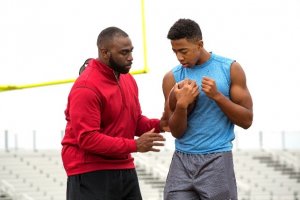When classes begin in the fall, students eagerly anticipate the beginning of their sports seasons. Participating in sports provides an array of physical, emotional, and social advantages for students. However, sports such as football and soccer are all activities that can all precede injuries. With every sport, there is always the possible risk of an injury. Football may carry higher rates of concussion cases whereas soccer players are more at risk for injuries including sprains or torn ligaments. Regardless of what the sports may be, there are several important tips that athletes and coaches should consider to prevent injuries during the fall sports season.
Before a student steps onto a field or court, there should be a physical examination administered. The school having knowledge of their student-athletes medical history is vital for the health of the student. A young athlete may have a medical condition that has prolonged, and extensive physical activity could worsen the condition.
The training for fall sports begins toward the end of the summer months and the temperatures can still be scorching. Heat exhaustion is common with sports played outdoors like football or soccer. These student-athletes are very often at risk for heat stroke. Due to rigorous practices that could last into the evening hours, it is important that these athletes replace what their body works off. Water and sports drinks with electrolytes should always be available to keep their fluids and hydration at proper levels. Frequent breaks on extra hot and humid days should be taken as well.
Young athletes are more inclined to suffer from a sports-related injury such as a concussion. It can happen to an athlete participating in a sport in even the most unlikely of instances. For contact sports, students should wear protective headgear and be fully aware of concussion prevention. An unacknowledged concussion can leave detrimental damage to the brain if not treated properly during the days following the incident.
Depending on what the sport is, it is important to be sure students have or are provided with the correct safety gear or equipment. For football, helmets, mouth guards and pads are essential. Each student should be fitted properly to their helmets and other equipment. Coaches should make sure their players are warming up and stretching before games and practice with some form of aerobic exercise. The rules of the game should also be clearly taught to newer athletes to avoid a potential injury.
If students and coaches follow these simple tips, everyone can enjoy the excitement and teamwork of fall sports!

